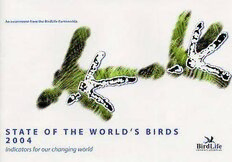
State of the World's Birds 2004 PDF
75 Pages·2004·8.135 MB·English
Most books are stored in the elastic cloud where traffic is expensive. For this reason, we have a limit on daily download.
Preview State of the World's Birds 2004
Description:
Given the fundamental importance of biodiversity, we know surprisingly little about it. We are sure that it is disappearing fast, yet at present we cannot even measure progress (or otherwise) towards the 2010 target set by world leaders for slowing this loss. This BirdLife assessment examines what the best known group of living things, birds, can tell us about the state of biodiversity, the pressures upon it and the solutions that are being, or should be, put in place. It is a synthesis of current knowledge and provides a benchmark against which we can assess our efforts to conserve biodiversity in the future.`An exciting testimony to BirdLife's Intent and capacity to influence policy at the highest levels... gives a clear overview of how individual observations contribute to the bigger picture...a useful digest of contemporary conservation science presented in a less technical way. Paul Jepson, Birding Asia`The material is presented in such a clear, compact and exciting way that everyone who turns the pages will have their mind focused on the problems raised... should be in every school, academic and local library.'Biological Conservation`A 'Red Book' for the state of the planet, using the best known group of animals, birds, as examples to show what has happened, what is still happening, and what we are starting to do about it.'Bull ABC`A most useful document for all involved in conservation and conservation education.' Ibis`Full of interesting stories... illustrates that BirdLife is not narrowly concerned with saving birds from people, but tries to use the joy and appeal of birdwatching as a vehicle for better management of this world, so that birds as well as people can thrive... BirdLife emphasizes the need to work together with local people, engaging Site Support Groups around their priority sites. The approach is well aligned with efforts towards sustainable development, and the publication is well suited as hand-out material for aid institutions.'Oryx`The overall picture is grim, but the book demonstrates that there is much we can do, concluding that lasting solutions require lasting change, and the major challenges are not scientific, but social and political.'Wingspan
See more
The list of books you might like
Most books are stored in the elastic cloud where traffic is expensive. For this reason, we have a limit on daily download.
